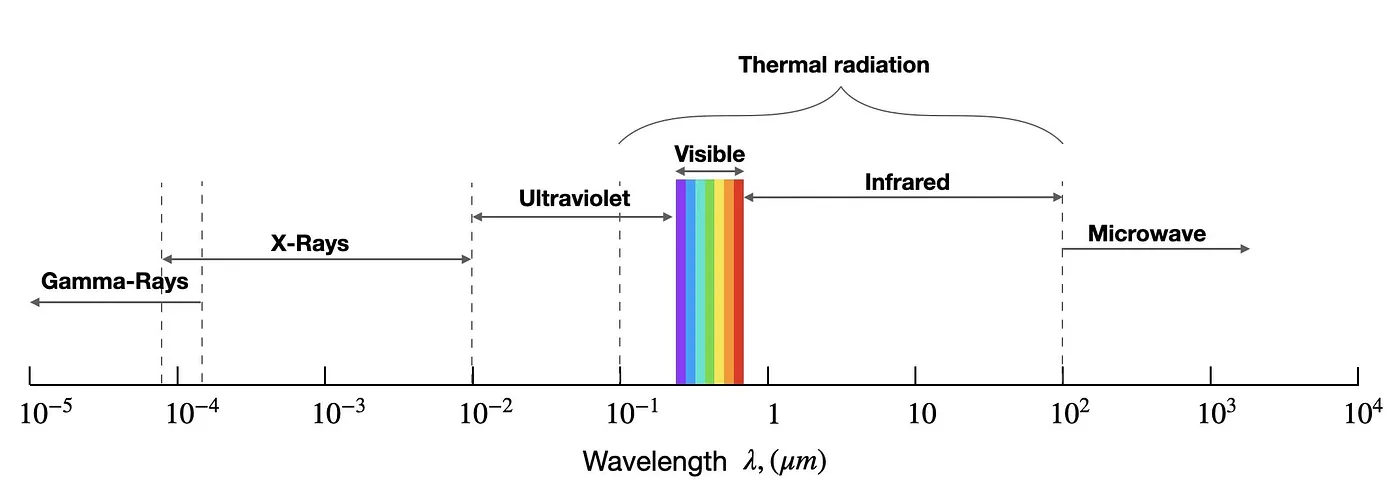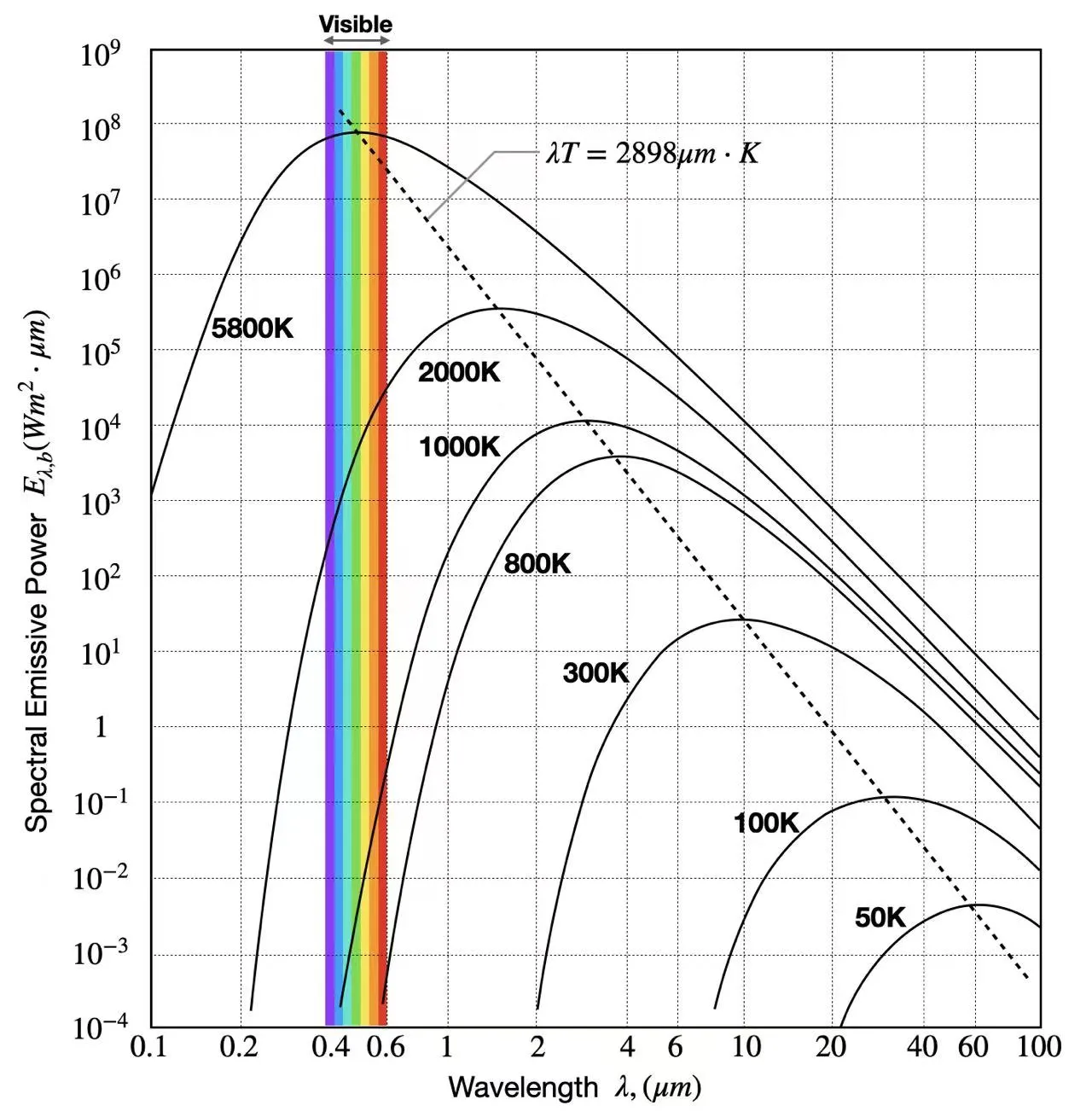Radiation
The main form of heat transfer in toasters is radiation. In thermal radiation, energy is transferred in the form of electromagnetic waves, at the speed of light. It’s the fastest way of heat transfer, and it doesn’t require any medium.

Spectrum of electromagnetic radiation
Figure 1 shows the complete spectrum of electromagnetic radiation. From approximately 0.1 to 100 micrometers, the radiation is called thermal radiation because it’s both caused by and affects the thermal state, or temperature, of matter.
The Stefan-Boltzmann law shows how to calculate the power of the radiation from a surface:
where is emissivity, is the Stefan–Boltzmann constant, and is the absolute temperature of the surface.
Some observations about radiation that are relevant to the toaster oven are:
The radiated power is proportional to the 4th power of the temperature. If we could increase the temperature of the heating element in the toaster just a little bit, we could significantly increase its cooking power.
When the emissivity is 1, we have a black body, which is an ideal surface that emits the most energy at any prescribed temperature and wavelength. Many real-life heat sources (like the sun) have a similar radiation profile to the blackbody. Figure 3 shows that the shape and distribution of the emitted energy are related to the temperature. That’s why the color temperature of light bulbs has such strange numbers like 5800K or 3000K. They correspond to what the visible light spectrum of a blackbody looks like at those temperatures. In the kitchen, we see the heating element of the toaster oven glow red when it heats up. That’s because more energy is emitted in the visible light frequency range as the surface temperature rises.

Black Body Radiation
The Stefan-Boltzmann law calculates the total power leaving the surface. At a distance, the incident radiation on a unit surface area decreases in proportion to the square of the distance. This is not due to any mysterious quantum mechanical mechanism; it’s simply that the surface area of a sphere is proportional to the square of the radius. If your bread is twice the distance from the heating element, you are only getting a quarter of the cooking power. Or if the bread is close to the heating element and its size is relatively large compared to the dimension of the heating element, different parts of the bread will receive significantly different radiative heat.
In addition to emitting radiation, all surfaces also reflect and absorb radiation. Bread in the toaster heats up because it absorbs radiation. Absorptivity is a surface characteristic, and it changes when the surface changes. White bread reflects more and absorbs less, so it might take a long time to brown. But when it’s browned, its absorptivity increases, and it could burn in a hurry. Consequently, if different parts of the bread receive different amounts of radiation, over time, the color difference in different parts will become more pronounced.
Infrared thermometers work by collecting radiation from the surface being measured. They have to make an assumption about the emissivity of the surface. As far as I know, most of them assume a value between 0.9 and 1. That works for most organic food ingredients, water, and oil. However, it doesn’t work for shiny stainless steel surfaces because their emissivity is less than 0.2. If you want to check if a stainless sauté pan is hot enough, pointing at the bare metal will give you a very low temperature. You need to pour some oil into it and aim the IR thermometer at the oil. By the way, high-end griddles and stainless pans are deliberately shiny; they retain more heat by emitting less.
Transparent materials not only reflect and absorb radiation but also let some radiation pass. So some thermal radiation will leak out through the glass door of your toaster oven.
Radiation absorptivity is mostly a surface phenomenon. However, the wavelength of the radiation and the water content of the bread have some impact on the penetration depth.
The moisture level of the bread changes how much radiation is reflected. NIR (Near InfraRed) moisture meters take advantage of this.